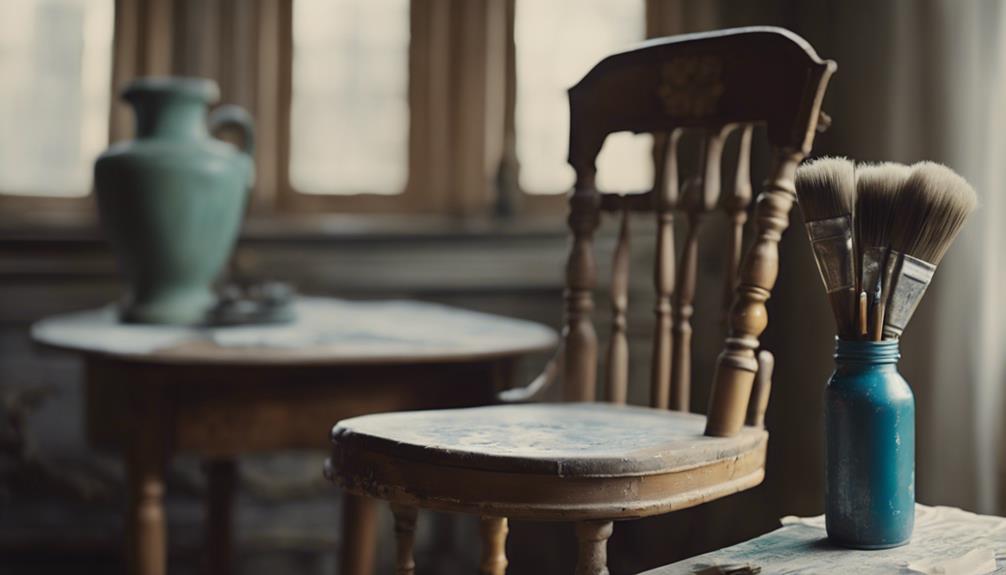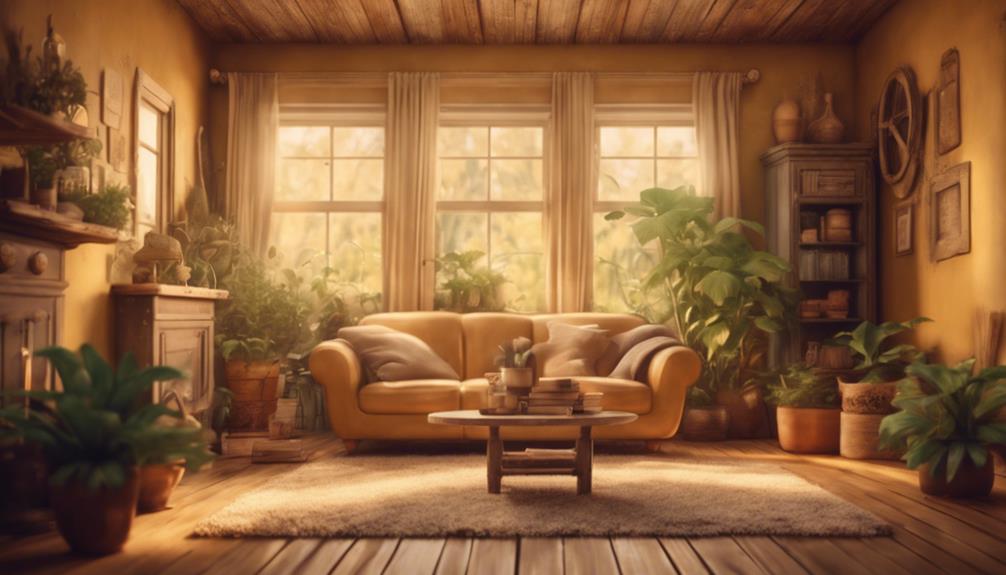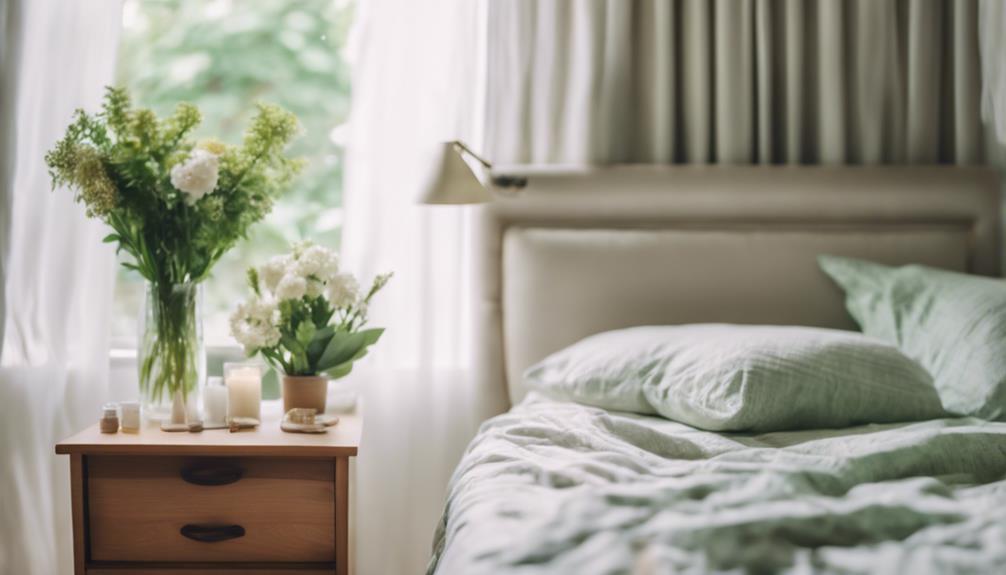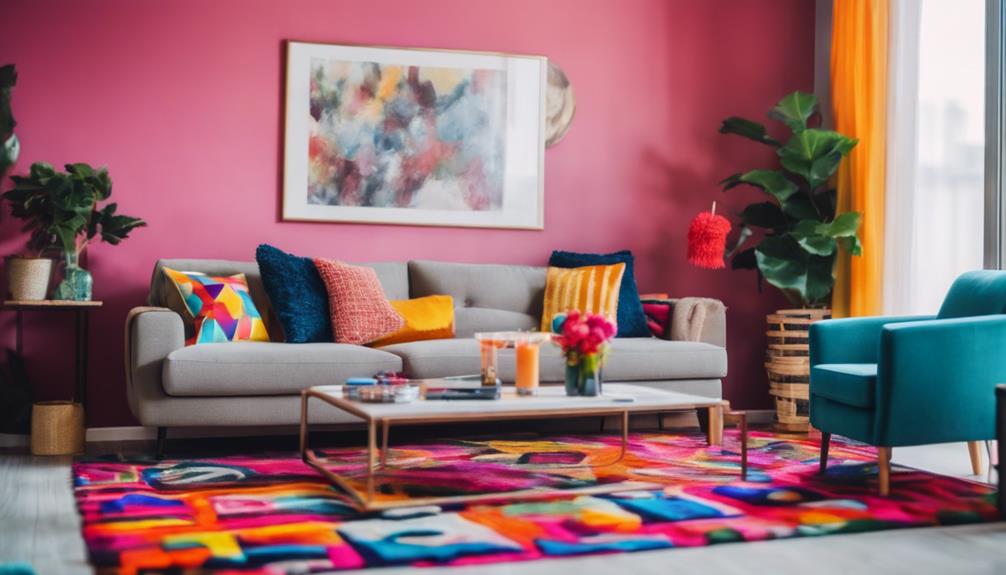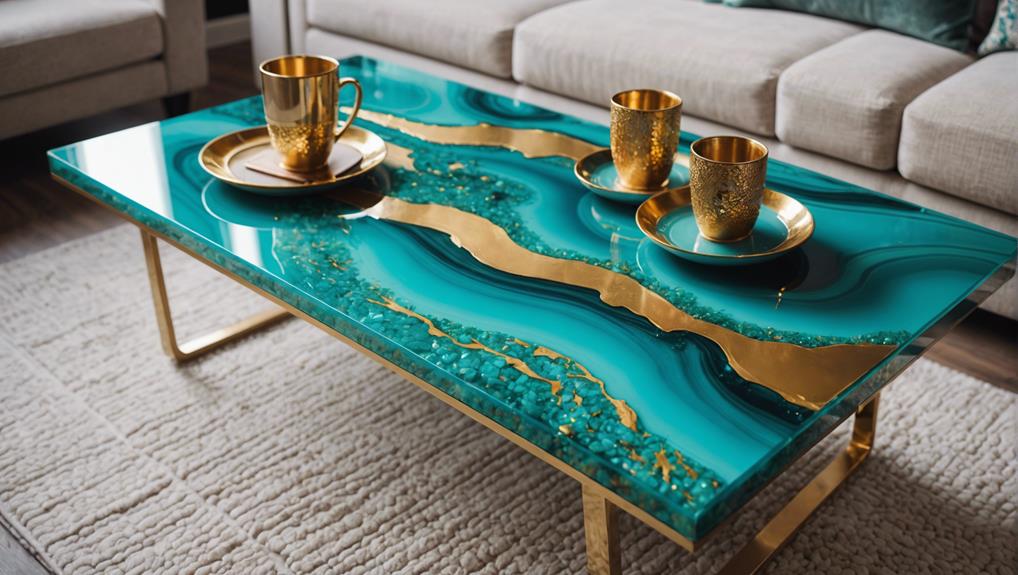To master the art of antiquing with chalk paint, start by thoroughly cleaning and preparing your furniture piece, ensuring a strong bond between the paint and surface. Next, apply a high-quality primer and base coat, followed by distressing edges and details to achieve a vintage look. Use dark wax strategically to enhance the distressed appearance, and buff the piece for a smooth finish. Enhance with additional coats and decorative elements, and seal your masterpiece with a clear wax or polyurethane. As you work through these steps, you'll uncover the secrets to transforming ordinary furniture into stunning, one-of-a-kind pieces that exude character and charm.
Key Takeaways
• Thoroughly clean and prepare the surface for painting by repairing, sanding, and priming to ensure a strong bond between paint and surface.
• Apply high-quality chalk paint in thin coats, allowing each coat to dry completely, to achieve a smooth and even base coat.
• Distress edges and details using fine-grit sandpaper to create a visually appealing antique finish and add depth to the painted furniture.
• Use dark wax strategically to enhance the distressed appearance, building up layers for a deeper, richer look and adding texture for visual interest.
• Seal the finished piece with clear wax or polyurethane, applying thin coats and choosing a high-quality sealant to protect and showcase the artwork.
Prepare Your Furniture Piece
Before you can achieve a beautifully antiqued finish with chalk paint, thoroughly clean your furniture piece to remove dirt, grime, and any previous finishes that may interfere with the painting process. This essential step guarantees a strong bond between the paint and the surface, resulting in a durable and long-lasting finish.
Take the time to inspect your furniture piece carefully, making any necessary repairs to loose joints or cracks and dents. Once you've cleaned the surface, lightly sand it to create a smooth and even base for the chalk paint to adhere to. This gentle sanding will help the paint penetrate the surface more evenly, reducing the risk of unevenness or peeling.
Clean and Prime the Surface
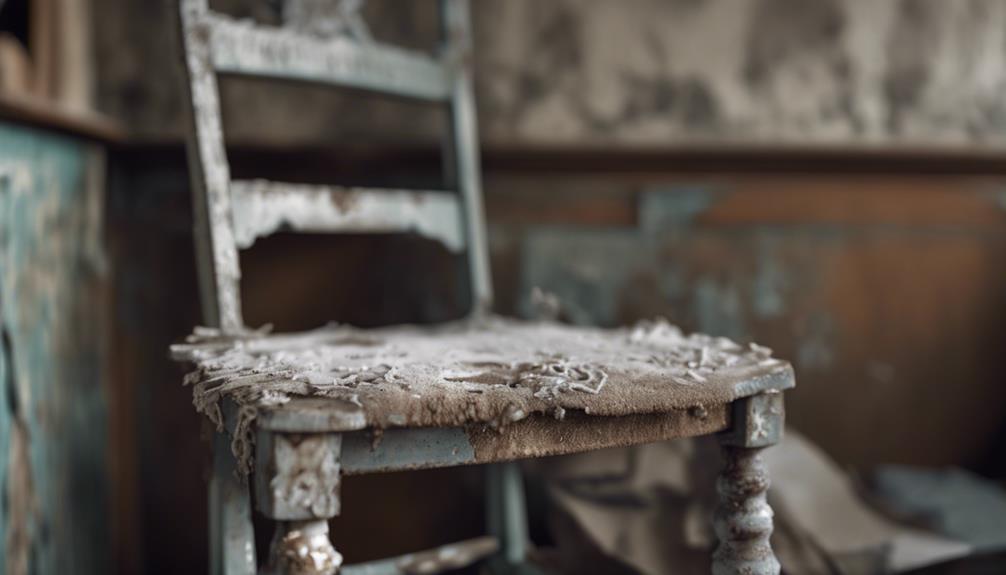
Clean the furniture surface thoroughly with soapy water to remove dirt and grime, ensuring a strong bond between the chalk paint and the surface. This step is vital, as any dirt or grime left behind can compromise the adhesion of the paint. Use a soft-bristled brush to gently scrub away any stubborn dirt or stains.
Once the surface is clean, inspect it for any areas that may need priming. If your furniture piece has been previously painted or stained, it's a good idea to prime the surface to guarantee excellent adhesion. Use a high-quality primer specifically designed for chalk paint to promote durability and prevent bleed-through. Apply the primer according to the manufacturer's instructions, making sure the surface is completely dry before moving on to the next step.
Apply Base Coat of Chalk Paint
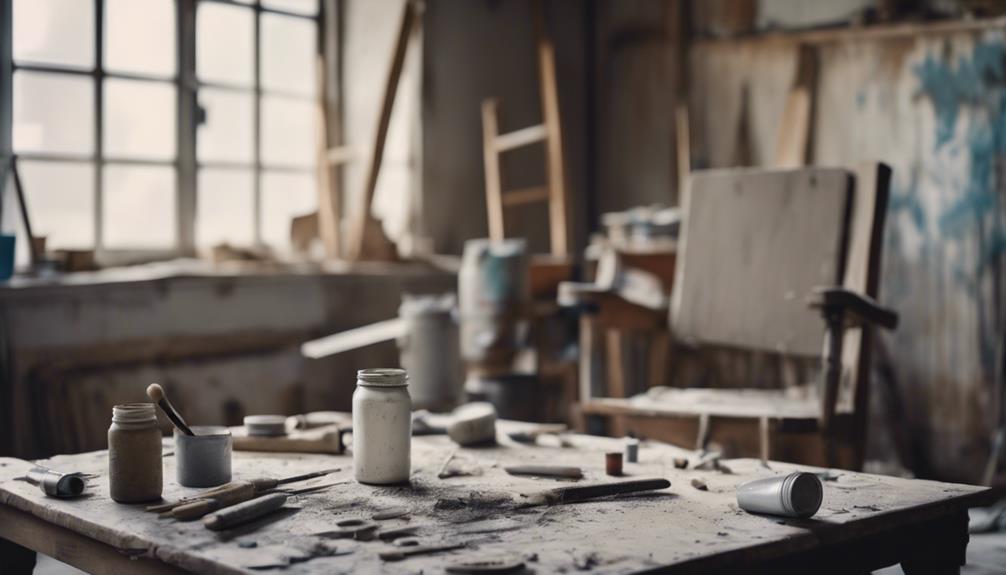
With your surface clean and primed, you're ready to apply a base coat of chalk paint to your furniture, setting the stage for a beautifully distressed finish. This important step lays the groundwork for a stunning, vintage-inspired look.
When applying the base coat, remember to:
- Choose the right paint: Select a high-quality chalk paint in your desired color for a smooth, even finish.
- Apply thin coats: Guarantee even coverage by using thin coats of chalk paint, allowing each coat to dry completely before applying additional coats.
- Use the right tools: Opt for chalk paint brushes, designed specifically for easy and efficient application of the base coat.
- Be patient: Allow each coat to dry completely before moving on to the next step, ensuring a flawless finish.
Distress the Edges and Details
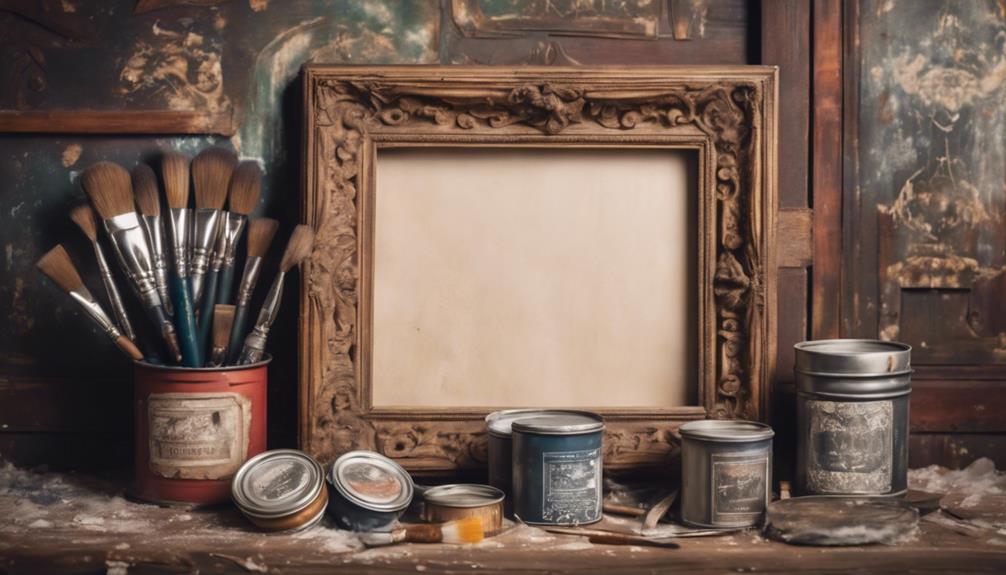
Using fine-grit sandpaper, you'll carefully distress the edges and details of your furniture piece, focusing on areas that would naturally wear over time to achieve a realistic antique look. As you work, remember to highlight intricate carvings, corners, and edges for a more authentic distressed effect. This step is vital in adding depth and character to your painted furniture, giving it a rich, storied past.
Take your time distressing, as it's all about balance and restraint. You want to achieve a visually appealing antique finish, not a piece that looks like it's been ravaged by time. With Chalk Paint, you've got a solid foundation to work from, and now it's time to add the finishing touches.
Add Dark Wax for Antique Effect
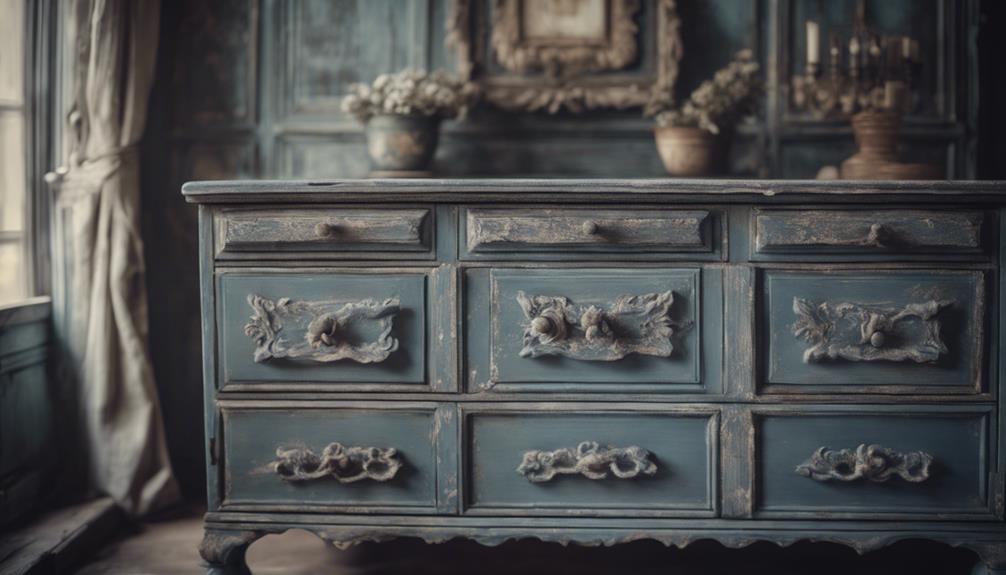
As you move on to the next step in mastering antiquing with chalk paint, you'll learn how to effectively use dark wax to create a truly vintage look.
To achieve this, you'll need to master various dark wax techniques, such as strategically applying it to highlight specific details and contours, and waxing for distressing to accentuate the aged appearance.
Dark Wax Techniques
You can achieve a rich, antique look on your chalk-painted furniture by applying dark wax, which adds depth and age to the piece. This technique is a game-changer for creating a truly unique, one-of-a-kind piece.
To get started, apply dark wax after the paint has dried and sealed with clear wax. You can use it sparingly for a subtle effect or build it up in layers for a more dramatic antique look.
Here are some key tips to keep in mind when working with dark wax:
- Apply it strategically: Focus on crevices, corners, and edges to enhance the distressed appearance.
- Control the intensity: Buff the dark wax to tone down the antique effect if needed.
- Build it up: Apply multiple layers of dark wax for a deeper, richer look.
- Experiment with texture: Use dark wax to add texture and visual interest to your piece.
Waxing for Distressing
To achieve a truly aged appearance, apply dark wax strategically to the chalk-painted surface, focusing on areas that would naturally show wear and tear over time. As you wax for distressing, remember that dark wax is key to creating an antique effect.
By applying it over chalk paint, you'll enhance details, crevices, and texture, adding depth and dimension to the piece. To control the intensity of the antiquing effect, apply dark wax after clear wax.
Use a wax brush or lint-free cloth to apply the dark wax in a controlled manner, focusing on edges, corners, and areas where natural wear would occur. As you work, keep in mind that dark wax can be buffed or wiped off to achieve the desired level of antiquing, giving your furniture a rich, timeworn look.
Apply Clear Wax for Protection
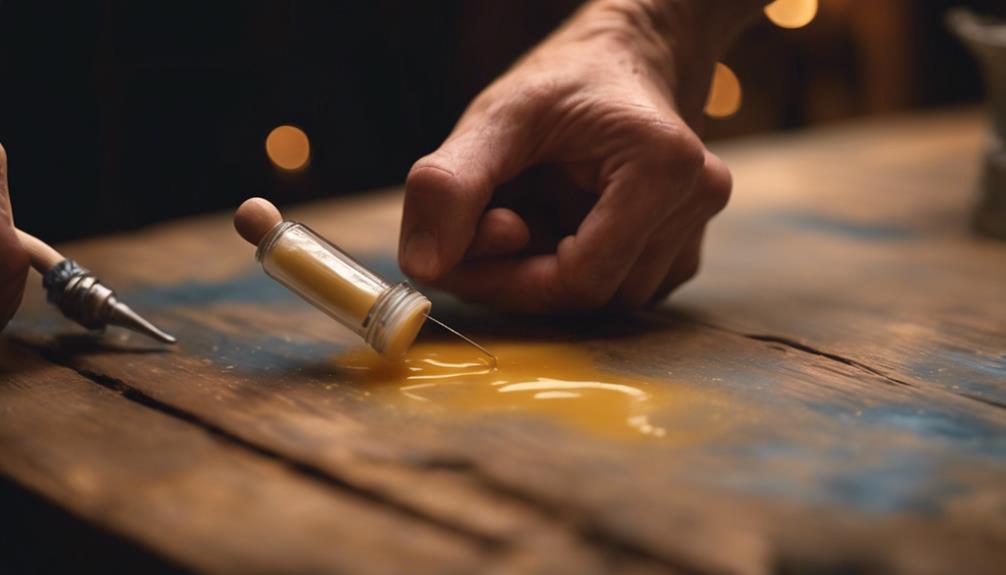
Now that you've achieved the perfect distressed look with dark wax, it's time to protect your masterpiece with a clear wax topcoat.
As you apply this important layer, you'll want to keep in mind some essential tips, including how to apply the wax for best coverage, how long it takes to dry, and what to do if you need to remove excess wax.
Wax Application Tips
After completing your chalk paint project, applying a clear wax coating is the next essential step towards safeguarding your beautifully crafted piece from damage and wear. This protective layer guarantees that your chalk paint finish remains vibrant and intact for years to come.
When applying clear wax, remember these essential tips:
- Use a wax brush: A wax brush is specifically designed for applying wax, allowing for smooth, even coats.
- Apply thin coats: Thin coats prevent pooling and ensure a smooth finish.
- Work in small sections: Divide your project into smaller areas to maintain even coverage and prevent wax buildup.
- Don't overdo it: Too much wax can lead to a sticky, uneven finish.
Wax Drying Time
You'll need to allow the clear wax to dry for at least 24 hours before using your beautifully transformed furniture. This drying time is important, as it allows the wax to fully absorb and harden, providing excellent protection for your chalk-painted furniture.
To guarantee a smooth, even application, make sure to apply the clear wax in thin, uniform coats, allowing each coat to dry before adding the next. This will prevent uneven drying and ensure a consistent finish. Remember, the clear wax is essential for enhancing the durability and longevity of your chalk paint finish.
Wax Removal Methods
With your beautifully waxed furniture finally ready, it's crucial to understand how to properly maintain its protected finish by mastering wax removal methods. To guarantee your furniture remains in pristine condition, it's important to grasp how to remove excess wax and maintain the protective layer.
Here are some crucial wax removal methods to keep in mind:
- Use a lint-free cloth: Gently buff the waxed surface with a clean, lint-free cloth to remove excess wax and achieve a smooth finish.
- Avoid harsh chemicals: Never use harsh chemicals or abrasive materials to remove wax, as they can damage the finish.
- Reapply clear wax regularly: Reapply clear wax every 6-12 months to maintain the protective layer on your distressed furniture.
- Inspect and maintain: Regularly inspect your furniture for signs of wear and tear, and reapply wax as needed to maintain the protective layer.
Buff the Piece for Smooth Finish
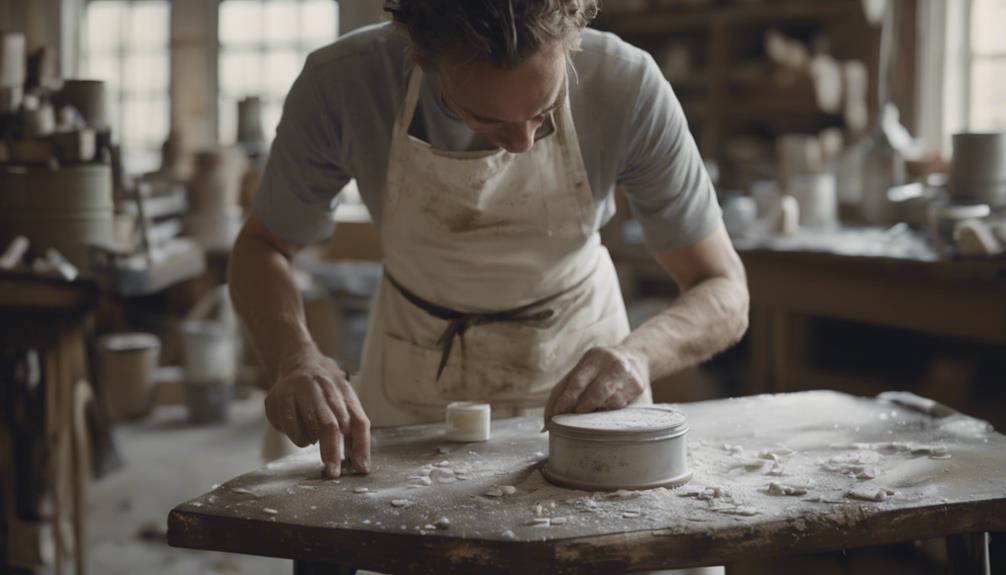
To achieve a smooth, polished finish, buff the piece in circular motions using a lint-free cloth, making sure to cover the entire surface. This essential step removes excess wax or paint residue, leaving your furniture with a clean, professional appearance.
As you buff, focus on the distressed areas, where the wax may have accumulated, and gently work the cloth in circular motions to enhance these sections. By doing so, you'll create a sophisticated, refined look that exudes a sense of antiquity.
Take your time when buffing, as this process requires patience and attention to detail. As you work, you'll notice the finish becoming increasingly smooth and polished, with a subtle sheen that adds depth and character to the piece.
Enhance With Additional Coats
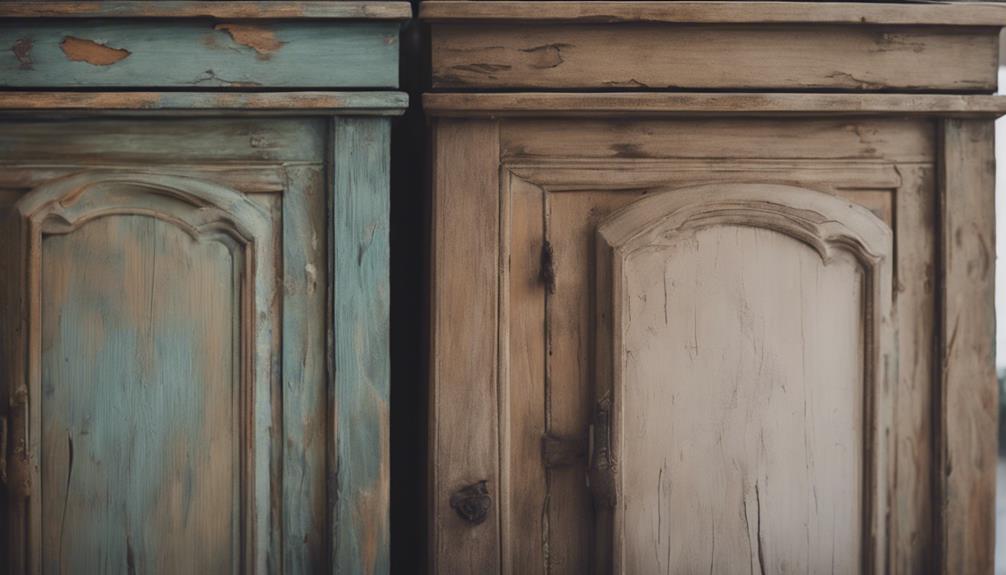
By layering additional coats of chalk paint, you can build depth, richness, and an authentic antique patina on your furniture. This process allows you to enhance the distressed look and deepen the color of your piece, creating a truly unique and customized antique finish.
Here are some benefits you can expect from layering coats of chalk paint:
- Deeper color: Each additional coat will deepen the color and create a richer, more authentic look.
- Distressed look: Layering coats of paint will help create a more pronounced distressed look, adding to the antique charm of your piece.
- Cover imperfections: Additional coats of paint can help cover any imperfections or uneven spots on the furniture surface.
- Customized finish: Experimenting with different colors or shades of chalk paint will give you a one-of-a-kind antique finish that reflects your personal style.
Remember to apply and dry each coat thoroughly before moving on to the next step.
Add Finishing Touches and Embellishments
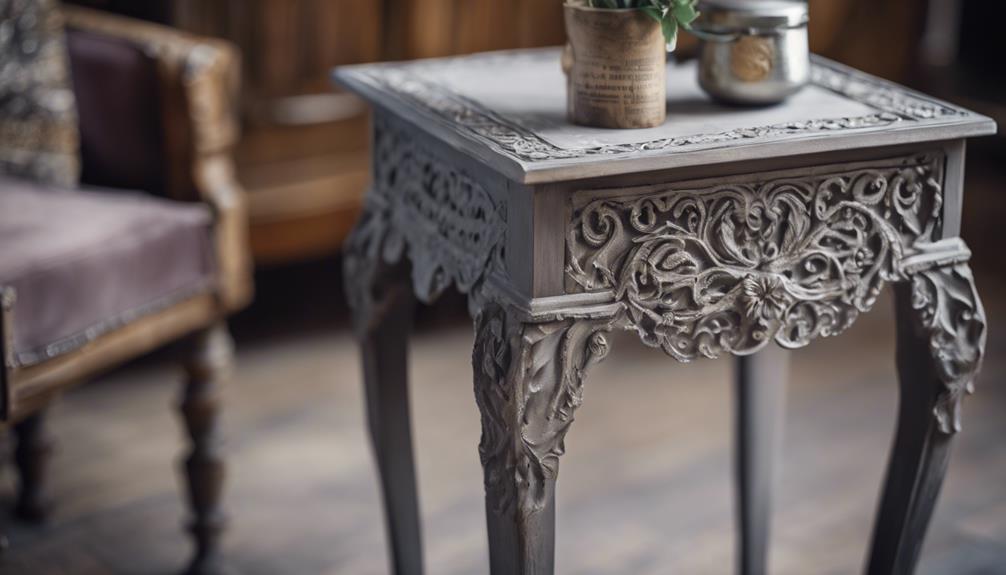
You can now add the perfect finishing touches to your antique-finished piece by incorporating decorative elements, distressing techniques, and aging methods that will elevate its unique character.
To enhance the antique look, experiment with distressing techniques like dry brushing or sanding, which will give your piece a worn, aged appearance.
Consider layering different chalk paint colors to add depth and dimension to your piece, creating a rich, complex finish.
Decorative elements like stencils, decals, or gilding can also be incorporated to add an extra layer of visual interest.
Don't forget to experiment with aging techniques such as crackling, patina, or faux wood grain to give your piece an authentic, vintage feel.
Finally, consider using dark wax or glaze to highlight details and create an aged appearance.
Seal and Enjoy Your Masterpiece
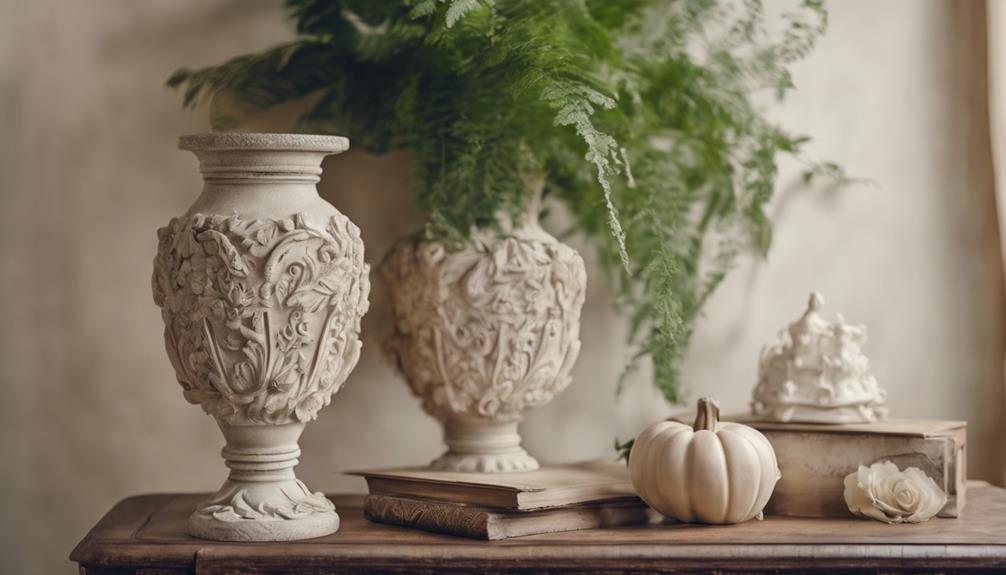
Now that you've added the perfect finishing touches to your antique piece, it's time to think about protecting your masterpiece.
You'll want to seal your chalk paint finish with a clear wax or polyurethane to guarantee it withstands the wear and tear of daily use.
Finishing Touches
To guarantee your beautifully distressed piece is properly protected and the finish is enhanced, be sure to seal it with a high-quality clear wax or polyurethane. This step is essential in preserving your hard work and making your piece last for years to come.
Here are some essential tips to keep in mind when sealing your masterpiece:
- Apply thin coats: This ensures durability and longevity, preventing the sealant from pooling or becoming too thick.
- Choose a high-quality sealant: This will give your piece a professional-looking finish and protect it from damage.
- Select the right sealant: Clear wax, polyurethane, or polycrylic can all be used to seal your chalk-painted furniture, so choose the one that best suits your needs.
- Allow it to dry: Make sure the sealant is completely dry before using your furniture to prevent smudges or damage.
Protective Coatings
With your beautifully distressed piece complete, it's time to shield it from wear and tear with a protective coating that will make your masterpiece shine.
Now that you've achieved the perfect distressed look on your Chalk Paint furniture, it's important to seal it with a top coat to guarantee its durability. You can choose from various sealants, such as clear wax or polyurethane, to protect your paint job and enhance its longevity.
When applying the sealant, make sure to do it evenly in thin coats to achieve complete coverage. It's vital to select a high-quality sealant that won't compromise the integrity of your distressed finish. Clear wax, polyurethane, or polycrylic are all effective options for sealing your chalk-painted furniture.
Once you've applied the sealant, allow it to dry completely before putting your beautifully antiqued masterpiece to use. By following these steps, you'll be able to enjoy your beautifully distressed piece for years to come.
Frequently Asked Questions
How to Make Something Look Antique With Chalk Paint?
When you want to make something look antique with chalk paint, you'll need to think beyond a single coat of paint.
You'll achieve a more authentic look by applying layers of chalk paint in varying colors, allowing each layer to dry before adding the next.
Then, use sandpaper to distress the edges and corners, mimicking natural wear over time.
How Do You Chalk Paint Step by Step?
Imagine you're a master chef, expertly layering ingredients to create a culinary masterpiece. Similarly, when you chalk paint, you're building layers of color and texture to achieve a unique, distressed look.
To do it step by step, start by cleaning the surface, then apply thin coats of chalk paint, allowing each layer to dry.
Next, choose your distressing method, whether it's dry, wet, or wax, and finally, seal your work with clear wax or polyurethane to protect and enhance the finish.
What Grit Sandpaper for Chalk Paint Distressing?
When it comes to chalk paint distressing, you'll want to reach for fine-grit sandpaper, ideally between 120-220 grit. This will help you achieve a smooth, subtle distressed look without removing too much paint.
Using fine-grit sandpaper strategically allows for controlled distressing, gently wearing away the paint without damaging the surface.
Avoid coarse sandpaper, as it can strip away too much of the paint layers.
How Do You Get a Super Smooth Finish With Chalk Paint?
As you begin your chalk paint journey, remember that a super smooth finish is within your reach! To achieve it, start by investing in a high-quality paintbrush, which will make all the difference in the world.
Then, be sure to apply thin, even coats, and don't skip the essential step of sanding between coats with a fine grit sandpaper.
Conclusion
Now that you've mastered the art of antiquing with chalk paint, the possibilities are endless! You've transformed a piece of furniture into a stunning work of art, rich with character and history.
But don't stop here – experiment with new techniques, colors, and textures to create truly one-of-a-kind masterpieces. The thrill of the hunt for the perfect piece, the rush of creativity as you bring it back to life – it's all just beginning.
What'll you create next?
